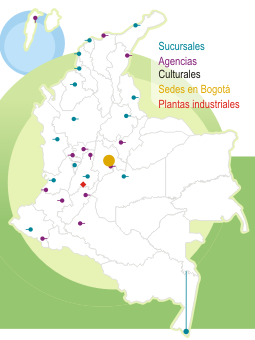Labor Market Report - January 2024
This report details the labor market's current situation according to the Official Colombian Household Survey (GEIH in Spanish) and the impact of the National Training Service’s (SENA in Spanish) labor skills certification program.According to data from the GEIH, between November 2022 and 2023, employment in the national aggregate grew by 2.8%. However, the rolling quarter series shows at the margin a contraction of about 1.5% in the employed population between August and November. This decline in employment, in quarterly terms, is explained by a lower dynamism in the domain of other small municipalities and the rural area. Meanwhile, employment in large and medium urban areas remained relatively stable. The employment to population rate (ER) contracted in the small municipalities and the rural area between August and November by 1.6 percentage points (pp), reaching 55.7%. This led to a decline of the ER in the national aggregate, which stood at 57.5%. The dynamics of the salaried segment from household surveys is consistent with other sources of information on salaried and formal employment, such as the administrative records of the Planilla Integrada de Liquidación de Aportes (PILA, an integrated record of contributions to social security) of contributors to the health care system, which shows that this segment has stopped growing in recent months. The sectors that have contributed most to employment dynamics in annual terms are transportation and communications, public administration, health, and education. However, the margin shows a negative contribution of most branches of activity to the quarterly variation in employment.
The stability of the formal employment segment is confirmed by the vacancy rates, which stopped growing in all sources of information. However, they remain at high levels compared to their recent history.
The Quarterly Survey of Economic Expectations of Banco de la República (the Central Bank of Colombia) suggests a negative balance in the expectation of personnel expansion. On the other hand, consistent with lower labor demand dynamics in rural areas, the population outside the labor force in this domain has grown in recent months, which pulled down the labor force participation rate (PR) in the national aggregate in the last quarter of the year.
Although the unemployment rate (UR) shows annual reductions in all domains, unemployment has begun to show moderate increases in recent months, consistent with the slowdown in economic activity during 2023. This deterioration has been more noticeable in rural areas than urban areas; in the latter, UR stopped decreasing in the last quarter but remains at low levels. This, coupled with the high level at which the vacancy rate stabilized, suggests that the labor market remains tight. By 2024, national UR is expected to be between 9.3% and 12.4%, with 10.8% as the most likely value, implying a moderate increase in UR throughout 2024. These forecasts point to a tight labor market, which, in 2024, would be moving towards a neutral zone, where inflationary pressures from the labor market would dissipate. The UR forecasts and the non-accelerating inflation rate of unemployment (NAIRU) estimate suggest that the unemployment gap will continue to close in 2024 and will not be statistically different from zero as of the second quarter of the year. Labor income of both salaried and self-employed workers registered real annual growth so far in 2023. In the case of the salaried segment, wage indexation is highly correlated with the increase in the minimum wage.
As usual, this report is divided into two sections. The first section provides a detailed analysis of the current labor market situation. The second section analyzes the impact of SENA's labor skills certification program on labor income. This type of program is known in the literature as skills signaling since it allows workers to have a formal backing of their knowledge in the eyes of employers. Through econometric techniques, it is found that obtaining a certificate in advanced skills has a positive and significant impact on labor income of about 9.7%.






























































